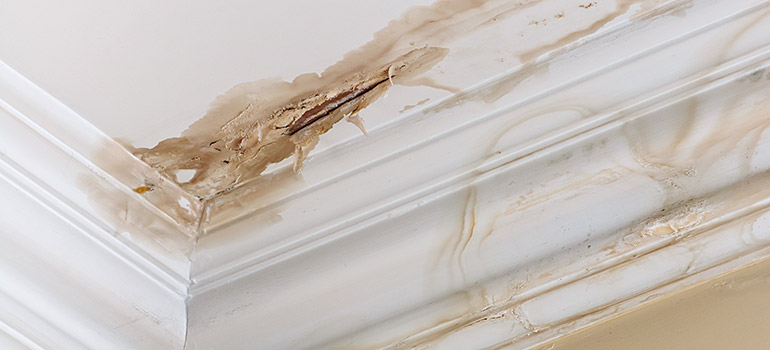Do's as well as Don'ts Throughout Water Damages Emergency Situations.
Do's as well as Don'ts Throughout Water Damages Emergency Situations.
Blog Article
Are you currently searching for insight around Reducing Your Risk Of Water And Fire Damage At Home?

Though water gives life, water intrusion on components where it's not expected to be can cause damages. If the water soaks right into your framework, it can peel off away surface areas as well as erode the structure. Mold and mildew and also mold also flourish in a wet environment, which can be hazardous for your wellness. Homes with water damage smell old as well as musty.
Water can come from lots of sources such as typhoons, floods, ruptured pipes, leaks, and drain concerns. In case you experience water damages, it would certainly be excellent to recognize some safety and security preventative measures. Here are a few guidelines on exactly how to manage water damage.
Do Prioritize Home Insurance Coverage
Water damages from flooding as a result of heavy winds is seasonal. Nevertheless, you can also experience an abrupt flooding when a damaged pipe instantly breaks into your house. It would be best to have residence insurance policy that covers both disasters such as natural calamities, as well as emergency situations like busted plumbing.
Do Not Neglect to Turn Off Utilities
In the event of a disaster, especially if you reside in a flood-prone location, it would be recommended to turn off the major electrical circuit. This removes power to your entire house, avoiding electric shocks when water can be found in as it is a conductor. Furthermore, do not neglect to turn off the main water line shutoff. Furnishings will certainly move about and trigger damage when floodwaters are high. Having the major valve turned off avoids further damages.
Do Remain Proactive as well as Heed Weather Signals
Pay attention to evacuation warnings if you live near a creek, river, or lake. Doing so reduces potential residential property damages.
Don't Ignore the Roofing System
Before the climate transforms shocking, make sure you have a roof covering examination. As a matter of fact, it would certainly be prudent to get this solution annually as it can minimize intricate problems. If there are no holes and leakages in your roofing, you can stay clear of rain damages. Your roofer will additionally care for faulty seamless gutters or any other indications of weakening. This will certainly stop water from flowing down your wall surfaces and also saturating your ceiling.
Do Pay Attention to Tiny Leakages
A ruptured pipeline doesn't occur over night. You might notice bubbling paint, peeling wallpaper, water streaks, water spots, or dripping noises behind the wall surfaces. Have your plumbing repaired prior to it results in huge damages.
Don't Panic in Case of a Ruptured Pipeline
Keeping your presence of mind is important in a time of dilemma. Panicking will just compound the issue due to the fact that it will suppress you from acting quickly. When it comes to water damages, timing is crucial. The longer you wait, the more damage you can anticipate. Hence, if a pipeline bursts in your house, instantly shut down your primary water shutoff to remove the source. Then disconnect all electrical outlets in the area or turn off the breaker for that part of your house. Call a credible water damages remediation specialist for aid.
Water offers life, water breach on components where it's not intended to be can result in damages. Residences with water damages scent stuffy and old.
Water damage from flood dues to heavy winds is seasonal. You may see bubbling paint, peeling off wallpaper, water touches, water spots, or trickling audios behind the walls. When it comes to water damage, timing is crucial.
Some Do's & Don't When Dealing with a Water Damage
DO:
Make sure the water source has been eliminated. Contact a plumber if needed. Turn off circuit breakers supplying electricity to wet areas and unplug any electronics that are on wet carpet or surfaces Remove small furniture items Remove as much excess water as possible by mopping or blotting; Use WHITE towels to blot wet carpeting Wipe water from wooden furniture after removing anything on it Remove and prop up wet upholstery cushions for even drying (check for any bleeding) Pin up curtains or furniture skirts if needed Place aluminum foil, saucers or wood blocks between furniture legs and wet carpet Turn on air conditioning for maximum drying in winter and open windows in the summer Open any drawers and cabinets affected for complete drying but do not force them open Remove any valuable art objects or paintings to a safe, dry place Open any suitcases or luggage that may have been affected to dry, preferably in sunlight Hang any fur or leather goods to dry at room temperature Punch small holes in sagging ceilings to relieve trapped water (don't forget to place pans beneath!); however, if the ceiling is sagging extremely low, stay out of the room and we'll take care of it DO NOT:
Leave wet fabrics in place; dry them as soon as possible Leave books, magazines or any other colored items on wet carpets or floor Use your household vacuum to remove water Use TV's or other electronics/appliances while standing on wet carpets or floors; especially not on wet concrete floors Turn on ceiling fixtures if the ceiling is wet Turn your heat up, unless instructed otherwise

As an enthusiastic person who reads about Ways to Reduce The Risk Of Fire And Water Damage, I figured sharing that article post was really helpful. Enjoyed reading our piece of writing? Please share it. Help other people check it out. Bless you for your time. Don't forget to come visit our site back soon.
Report this page